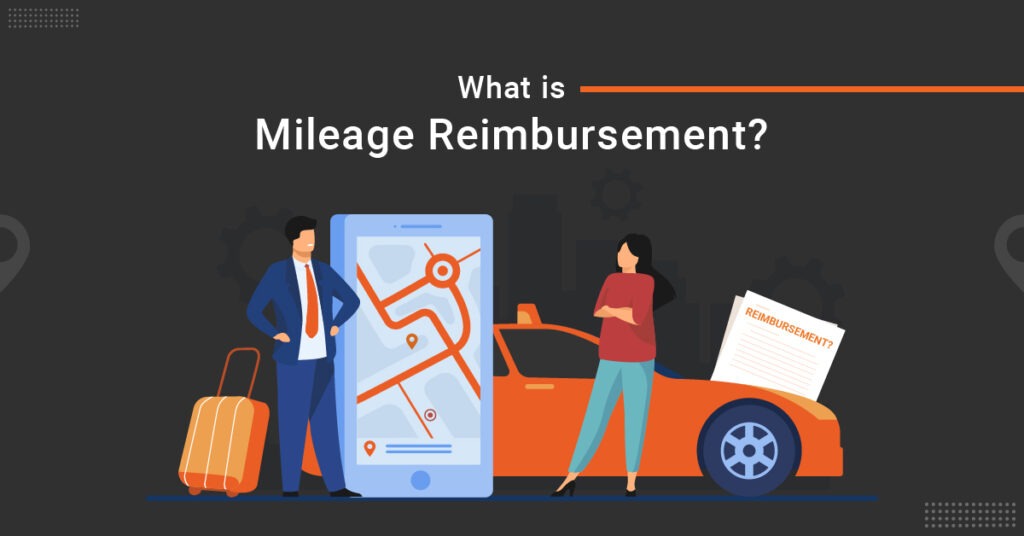
Mileage reimbursement can be a confusing topic for companies as well as their employees. Some frequently asked questions by the Admin and HR teams include -What rates to set? How to calculate mileage reimbursement? What software to use? and so on.
Let’s dig deep into company mileage reimbursement 2024 rates in the US and everything that you, as an employer, should know about – standard mileage reimbursement rates set up by the IRS, how to calculate them, whether they are taxable and more.
What is Mileage Reimbursement?
Mileage reimbursement is when an employer compensates an employee for using his or her personal vehicle for business-related journeys. An important point to note here is that the regular commute to and from the office is NOT included while reimbursing employees for mileage. It covers business journeys, or the miles employees cover during work, especially for business purposes.
The IRS defines a business journey as a journey that is “ordinary” (common or accepted in the industry) and “necessary” (helpful to the company). Some examples of trips that can be considered for mileage reimbursement are:
- Client meetings
- Site visits
- Business conferences
- Other official meetings
- Trips to buy essential supplies of business
While there are no federal laws to mandate reimbursing employees for mileage, state laws may apply in some jurisdictions in the US. For instance, the state of California has a law for mileage reimbursement under the California Labor Code Section 2802.
What is the Mileage Reimbursement Rate & How is it Calculated?
The mileage reimbursement rate is the cost per mile businesses set for reimbursing employees for using their personal vehicles for business, charitable, or medical purposes.
Each year, the mileage rate entirely depends on the agreement between the employer and the employee. The employer may set a self-determined rate for the entire organization or apply standard mileage rates set by an official body, like the Internal Revenue Service in the US, for reimbursements.
Wondering how you would decide on the mileage reimbursement rate? Don’t worry, you don’t have to track each journey an employee takes or the amount an employee has spent. You can select any one of the following ways to set the mileage reimbursement rate for your employees:
1. Flat Car Allowance
Flat car allowance is a standard monthly rate you pay your employees for using their personal vehicles for business journeys.
For instance, you can set an amount (let’s say $300 per month) for mileage reimbursement to employees to cover the cost of fuel, wear and tear, parking fee, etc.
2. Fixed & Variable Rate Allowance (FAVR)
You can also reimburse your employees under a fixed and variable rate reimbursement – an IRS revenue procedure. Under this program, you can reimburse your employees the fixed costs, i.e. license & registration fee, taxes and depreciation, insurance premiums, and variable cost, i.e. fuel, maintenance, and tire wear.
While using the FAVR method is more beneficial than giving a flat car allowance as it is tailored to each employee’s location-based actual costs and mileage, it requires more record-keeping than the standard mileage reimbursement method. Reimbursements under FAVR are generally tax-free. Follow the IRS guidelines, though.
3. Standard Mileage Rates
You can use the standard mileage reimbursement rates issued by the IRS, annually. Under this, the employees will have to show the total miles traveled for business purposes, you can multiply it with the IRS standard rate and reimburse the total amount.
The math is simple: let’s say the federal mileage rate is set at 56 cents per mile, you can then multiply this rate by the number of miles the employees drove over a period – for instance, if an employee drove 1000 miles in June, then he would be reimbursed $560.
It is important to mention here that businesses must have an effective policy for reimbursing employees for mileage. A clear, concise policy will help remove any doubts that the employees may have while filing their expenses and help companies receive tax benefits on offer.
In the US, for instance, companies are required to set up an accountable reimbursement plan so that the reimbursements are not considered as income of employees and therefore, taxable. To be included in the accountable plan, the employees are expected to fill in the following details:
- Business purpose
- Time and date of the business journey
- Total distance covered (Business miles; can be covered via an odometer)
- Destination of each drive
If it’s not an accountable plan, the mileage reimbursement can count as taxable wages.
Now, let’s have a look at the standard mileage rates set by the IRS for this year.
IRS Determined Standard Rates for Mileage Reimbursement 2024
For mileage reimbursement 2024, the standard rates set by the IRS for employees using their vehicle for “business, charitable, medical or moving purposes” are:
- 67 cents per mile for business mileage
- 21 cents per mile for medical mileage expenses and Armed Forces moving reasons
- 14 cents per mile for service of charitable organizations
As per the site, “The standard mileage rate for business use is based on an annual study of the fixed and variable costs of operating an automobile. The rate for medical and moving purposes is based on the variable costs.”
Remember: You can offer reimbursement to your employees that is less or more than the federal rate. However, if they exceed the standard rate, the reimbursement will count as regular income and be taxable.
Also, just to reiterate, companies starting their mileage reimbursement in 2024 must have an accountable plan beforehand. This way, the reimbursements are not considered as wages, which makes them taxable.
What are the Rates for Mileage Reimbursement if you are Self-Employed?
In the US, independent contractors can claim mileage reimbursements at the same rate as their paid employees. They can claim their mileage expenses on their tax return by working out the total amount spent on fuels, maintenance, and repairs, for the entire year or by calculating how much they have traveled overall for business.
Reimburse Employees on Time with ITILITE
By reimbursing employees for mileage accurately, you’ll increase employee satisfaction & deliver cost savings for the company. But it is also important that you make these reimbursements on time.
ITILITE offers you end-to-end expense management software that streamlines the process of mileage reimbursements. With the ITILITE platform, you can pre-configure a standard mileage reimbursement rate into the system. After that, your employees just need to enter their destinations, and the software will auto-calculate the reimbursement amount. This way, you can avoid calculation inaccuracies and ensure timely reimbursement.
Get a free demo of ITILITE corporate travel management tool now to get first-hand experience of the mileage reimbursement feature.


















